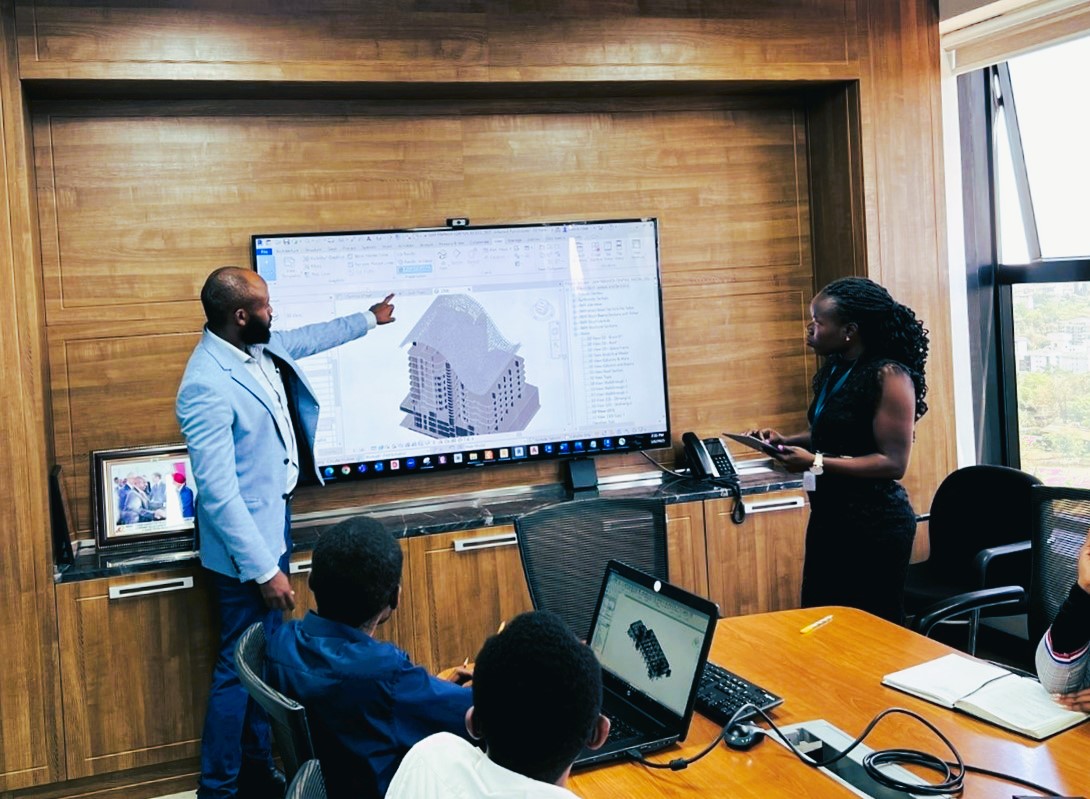Keeping pace with the digital engineering transformation
The case for action
The infrastructure industry has been slow to explore and adopt new innovations to enhance efficiency and increase value to its clients. A 2015 study from McKinsey & Company showed that the construction industry is only more “digitized” than agriculture and hunting when compared across 20+ industries. However, the recent global COVID-19 pandemic accelerated digitalization and use of technology in engineering and construction, boosting design collaboration, productivity, and site safety. This has been driven by the emergence and democratization of exciting new technologies, such as the Internet of Things (IoT), Big Data and Artificial Intelligence (AI), for use across a wide range of applications. New tools and ways of working such as drones for surveying and inspection, BIM, digital twin as well as virtual and augmented reality are being used today to change how we deliver projects to our clients.


The rapid changes in technology and industry trends also create new expectations of our competencies. We realize that if we do not learn, adapt, and reskill to meet the new demands of digital engineering, we would be going nowhere fast. We needed to embrace a whole new approach to the way we work and develop new skills – at speed.
Learning at the speed of business
As a seasoned and multidisciplinary engineering consultancy, it is natural to gravitate towards prioritizing standardization and consistency over innovation and flexibility. But we intentionally wanted to maintain a culture of innovation and adaptability. With senior commitment to deliver on a radical new approach to learning and harnessing the talent and investment already in existence across the organization we surveyed the market to find what learning solutions would be suitable.
We looked to the agility and growth-driven mindset of successful startups for inspiration.
Start-ups are agile and apply lean approaches to product development. They incorporate iterative ways of thinking about a problem that involves trial and error while remaining laser focused on getting the job done. Initial attempts often come up with solutions that do not work. But these are then adapted for another attempt and do a little better. Eventually, they end up with a minimum viable product that may not do everything desired, but get the job done now.
What would such an approach adapted to learning look like in practice? At Howard Humphreys it meant crafting a solution that was agile and responsive to the learning needs of the business, could be quickly integrated into the-flow of work, was targeted at meeting specific learning objectives, and could be iteratively improved upon based on feedback.
This took the form of a sprint, a concept rooted in the world of start-ups, that implements time boxed exercises focused on achieving a particular outcome as quickly and effectively as possible. We applied this concept to learning!
The pace of work today is fast, it is difficult to find time to dedicate to training new skills. Instead, we need swift and focused approaches to integrating learning into everyday work quickly and with measurable impact.
Implementing a Learning Sprint
Implementing a learning sprint involved several key steps: correctly understanding what needs to be learnt and why, identifying learning solutions that are agile, responsive and can be quickly rolled out, assembling the team of learners, encouraging collaboration and self-directed learning and incorporating continuous feedback and improvements.
We set out a clear learning objective; the full digital delivery of a real infrastructure project!
We assembled multidisciplinary teams to work in short, focused bursts to achieve specific goals, using feedback and reflection to refine their approach and improve their performance. Applying the principle of sprints to learning accelerated the acquisition of new skills and knowledge, kept staff motivated and engaged while quickly integrating new skills into their work.
At the end of the sprint, we evaluated the outcomes and reflected on the process. Identifying successes and areas for improvement and using this feedback to inform future learning sprints.

Our Take Aways
We set out to adopt emerging technologies and meet the needs of engineering infrastructure for the future. And while we found an approach that had successes, we still need to constantly iterate the way we learn to keep pace with evolving technology. What we found instead is an answer to a more important question: -what attitude should we maintain? The answer is a trait shared by successful businesses across all sectors: they are quick and constant learners.
- The learning sprint promoted a culture of continuous learning and improvement within the organization.
- Individuals and teams built their skills and knowledge base, enabling them to adapt quickly to changing business requirements and remain competitive in their respective fields
- Teams learnt more effectively in the flow of work, rather than through training course. The fast pace at which they become more competent was also important for the business’s bottom line.
